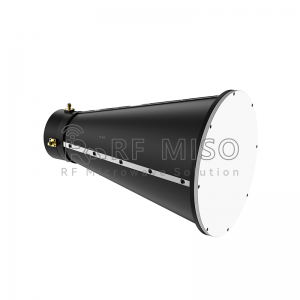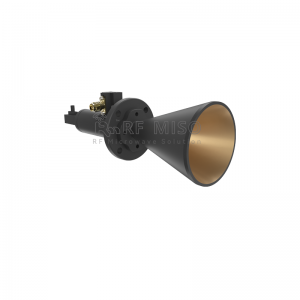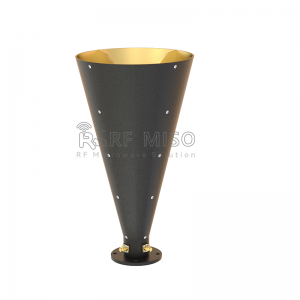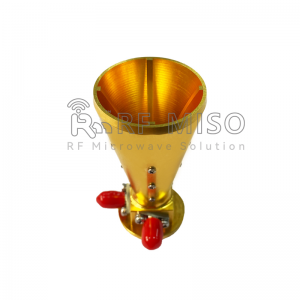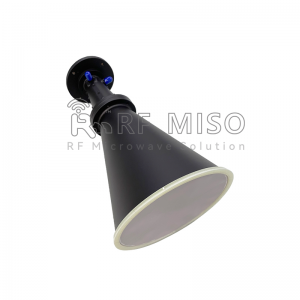The history of tapered horn antennas dates back to the early 20th century. The earliest tapered horn antennas were used in amplifiers and speaker systems to improve the radiation of audio signals. With the development of wireless communications, conical horn antennas are gradually used in radio and microwave fields. Its advantages in electromagnetic wave radiation and reception make it an important antenna structure. After the 1950s, with the rapid development of microwave communication technology, conical horn antennas began to be widely used in military and civilian fields. It is used in applications such as radar systems, communication systems, satellite communications, radio measurements and antenna arrays. The design and optimization of tapered horn antennas have also received a series of research and improvements. From initial theoretical analysis to the introduction of numerical simulations and optimization algorithms, the performance of tapered horn antennas continues to improve. Today, the tapered horn antenna has become a common and basic antenna structure widely used in wireless communications and microwave technology.
It works by directing electromagnetic waves from smaller ports to larger ports to achieve high gain and wide frequency response. When an electromagnetic wave enters the smaller port of a tapered horn antenna from a transmission line (such as a coaxial cable), the electromagnetic wave begins to propagate along the surface of the tapered structure. As the conical structure gradually expands, the electromagnetic waves gradually spread, forming a larger radiation area. This expansion of the geometry causes electromagnetic waves to radiate out of the larger port of the tapered horn antenna. Due to the special shape of the cone structure, the beam divergence of electromagnetic waves in the radiation area is relatively small, thus providing higher gain. The working principle of the conical horn antenna relies on the reflection, refraction and diffraction of electromagnetic waves within the conical structure. These processes allow electromagnetic waves to be focused and diffused, allowing them to radiate efficiently. In short, the working principle of a conical horn antenna is to guide electromagnetic waves from a smaller port to a larger port, achieving electromagnetic wave radiation and higher gain through a special geometric structure. This makes tapered horn antennas an important antenna type in wireless communications and microwave applications.
Cone Horn Antennas series product introduction:
E-mail:info@rf-miso.com
Phone:0086-028-82695327
Website:www.rf-miso.com
Post time: Sep-22-2023




